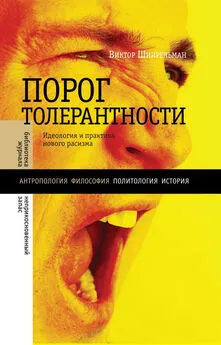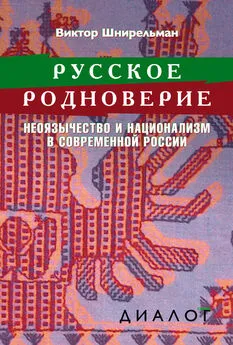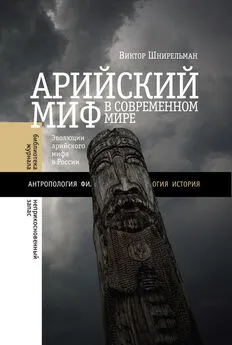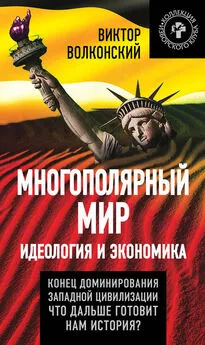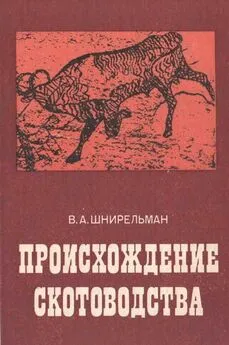Виктор Шнирельман - «Порог толерантности». Идеология и практика нового расизма
- Название:«Порог толерантности». Идеология и практика нового расизма
- Автор:
- Жанр:
- Издательство:Литагент НЛО
- Год:2014
- Город:Москва
- ISBN:978-5-4448-0342-4
- Рейтинг:
- Избранное:Добавить в избранное
-
Отзывы:
-
Ваша оценка:
Виктор Шнирельман - «Порог толерантности». Идеология и практика нового расизма краткое содержание
«Порог толерантности». Идеология и практика нового расизма - читать онлайн бесплатно ознакомительный отрывок
Интервал:
Закладка:
530
Lewis L. A. Blacks, black Indians, Afromexicans: the dynamic of race, nation, and identity in a Mexican moreno community (Guerrero) // American Ethnologist. 2000. Vol. 27. № 4. P. 903–904.
531
Cole J. The new racism in Europe; Lewis L. A. Blacks, black Indians, Afromexicans… P. 905–906; Rosa-Ribeiro F. Racism, mimesis and anthropology in Brazil // Critique in anthropology. 2000. Vol. 20. № 3. P. 221–241.
532
Goldstein D. «Interracial» sex and racial democracy in Brazil… P. 571–572; Linke U. German bodies: race and representation after Hitler. New York: Routledge, 1999. P. 40–44. Отмечу, что в последние годы у японской молодежи модно осветлять волосы, что делает их рыжими. Напротив, в конце 1960-х гг. афроамериканцы отказались от такого рода практик.
533
Lewis L. A. Blacks, black Indians, Afromexicans… P. 899. Правда, например, в некоторых районах Мексики расовые отношения осложнены тем, что, занимая более высокое положение в социально-экономической иерархии, чем индейцы, потомки африканцев не имеют возможности претендовать на статус «истинных мексиканцев». Об амбивалентных отношениях между черными и индейцами см.: Ibid. P. 903–910.
534
См., напр.: Goode Ju. Dousing the fire or fanning the flames: the role of human relations practitioners in intergroup conflicts // Baker L. D. (ed.). Life in America. Identity and everyday experience. Malden, MA: Blackwell, 2004. P. 73–74.
535
Tajfel H. The social psychology of minorities (Minority Rights Group. Report no. 38). London: Minority Rights Group, 1978. P. 4–5. См. также: Bonnett A., Carrington B . Constructions of anti-racist education in Britain and Canada // Comparative education. 1996. Vol. 32. Issue 3. P. 271–288.
536
Wahab A. Consuming narratives: questioning authority and the politics of representation in social science research // Dei G. J. S., Johal G. S. (eds.). Critical issues in anti-racist research methodologies. New York: Peter Lang, 2005. P. 34–35.
537
Hage Gh. White self-racialization as identity fetishism: capitalism and the experience of colonial whiteness // Murji K., Solomos J. (eds.). Racialization: studies in theory and practice. Oxford: Oxford University Press, 2005. P. 192–203.
538
Nzegwu N. Colonial racism: sweeping out Africa with mother Europe’s broom // Babbitt S. E., Campbell S. (eds.). Racism and philosophy. Ithaca: Cornell University Press, 1999. P. 130–135. К сходным выводам о появлении «культурного расизма» в рамках колониального дискурса ранее пришел Али Раттанси, убедительно продемонстрировавший, как колониализм искусно выстраивал образы «Другого», апеллируя прежде всего к культурным различиям. См.: Rattantsi A. «Western» racisms, ethnicities and identities in a «postmodern» frame // Rattansi A., Westwood S. (eds.). Racism, modernity and identity: on the Western front. Cambridge, UK: Polity Press, 1994. P. 36–48.
539
Nzegwu N. Colonial racism. P. 142–146.
540
Piper N. Racism, nationalism and citizenship. Ethnic minorities in Britain and Germany. Aldershot: Ashgate, 1998. P. 37–39; Wodak R., Reisigl M. Discourse and racism: European perspectives // Annual Review of Anthropology. 1999. Vol. 28. P. 178, 188–191; Gingrich A. Concept of race vanishing, movements of racism rising? Global issues and Austrian ethnography // Ethnos. 2004. Vol. 69. № 2. P. 157–159.
541
Кстати, это подчеркивает и А. де Бенуа. См.: Benoist A. de. What is racism? // Telos. Winter 1999. № 114. P. 40.
542
MacMaster N. Racism in Europe, 1870–2000. Basingstoke, Hampshire: Palgrave, 2001. P. 171–173.
543
MacMaster N. Racism in Europe, 1870–2000. Basingstoke, Hampshire: Palgrave, 2001. P. 169–170, 193.
544
Coogan K. Dreamer of the day: Francis Parker Yockey and the postwar fascist international. Brooklyn, N. Y.: Autonomedia, 1999. P. 213, 479–485, 533. О развитии идеи расовой автаркии и «биопсихологического единства» у итальянских фашистов см.: Gillette A. Racial theories in Fascist Italy. London: Routledge, 2002. P. 83–84, 109, 118–119, 126–127.
545
Запрет на смешанные браки был введен в 1949 г., а в следующем году такие браки были признаны преступлением, и нарушителей ожидало суровое наказание. Но в Южной Африке белые оправдывали это законодательство тем, что якобы черные настолько гордились своей национальностью, что сами не желали вступать в смешанные браки. См.: Breytenbach W. J. The new racism. Cape Town: Maskew Miller, 1978. P. 19.
546
Григулевич И. Р. и др . (ред.). Документы обличают расизм. М.: Наука, 1968. С. 168–170.
547
Breytenbach W. J. The new racism. Cape Town: Maskew Miller, 1978. P. 6–7. По словам Дж. Фредриксона, идеология апартеида стремилась приспособить романтический национализм Гердера и Фихте к условиям Южной Африки. См.: Fredrickson G. M. Racism: a short history. Princeton, N. J.: Princeton Univ. Press, 2002. P. 134–135.
548
Григулевич И. Р. и др . (ред.). Документы обличают расизм. С. 172.
549
Там же. С. 177–195. Подробно о режиме апартеида в ЮАР см.: Fredrickson G. M. White supremacy: a comparative study in American and South African history. New York: Oxford Univ. Press, 1981. P. 240–246.
550
О связи некоторых направлений неоязычества с расизмом и неонацизмом см.: Gardell M. Gods of the blood. The pagan revival and White separatism. Durham: Duke University Press, 2003.
551
Dyson M. E. Race rules. Navigating the color line. New York: Vintage, 1997. P. 85–86.
552
Chong K. H. What it means to be Christian: the role of religion in the construction of ethnic identity and boundary among second-generation Korean Americans // Baker L. D. (ed.). Life in America. Identity and everyday experience. Malden, MA: Blackwell, 2004. P. 87–106.
553
Fanon F. Toward the African revolution; political essays. London: Penguin Books, 1967. P. 42.
554
Barker M. The New Racism: conservatives and the ideology of the tribe. Frederick, Maryland: Aletheia Books, 1981. P. 21–22; Seidel G. Culture, nation and ‘race’ in the British and French New Right // Levitas R. (ed.). The ideology of the new right. Cambridge: Polity Press, 1986. P. 107–135; Gilroy P. ‘There ain’t no black in the Union Jack’. The cultural politics of race and nation. London: Unwin Hyman, 1987. P. 148–150; Anthias F., Yuval-Davis N. (in association with Cain H.). Racialized boundaries. Race, nation, gender, colour and class and the anti-racist struggle. London and New York: Routledge, 1992. P. 11–14, 57; Ansell A. E. New Right, New racism. New York: New York University Press, 1997. P. 19–22; MacMaster N. Racism in Europe, 1870–2000. Basingstoke, Hampshire: Palgrave, 2001. P. 193–198; Gilroy P. Between camps: nations, cultures and the allure of race. London: Routledge, 2004. P. 32–39.
555
Schuman H. Sociological racism // Trans-Action. December 1969. Vol. 7. P. 44–48.
556
Sears D. O., McConahay J. B. The politics of violence. Boston: Houghton Mifflin, 1973; McConahay J. B., Hough J. C. Symbolic racism // The Journal of Social Issues. 1976. Vol. 32. № 2. P. 23–45; Kinder D. R., Sears D. O. Prejudice and politics: symbolic racism versus racial threats to the good life // Journal of Personality and Social Psychology. 1981. Vol. 40. P. 414–431; Sears D. O. Symbolic racism // Katz P. A., Taylor D. A. (eds.). Eliminating racism: profiles in controversy. New York: Plenum, 1988. P. 53–84; Ward D. Generations and the expression of symbolic racism // Political psychology. 1985. Vol. 6. № 1. P. 1–18; Weigel R. H., Howes P. W. Conceptions of racial prejudice: symbolic racism reconsidered // Journal of Social Issues. 1985. Vol. 41. № 3. P. 117–138; Van Dijk T. A. Communicating racism. Ethnic prejudice in thought and talk. Newbury Park: Sage Publishers, 1987. P. 368; Howell S. E., Warren S. Public opinion and David Duke // Ross D. D. (ed.). The Emergence of David Duke and the Politics of Race. Chapel Hill: The University of North Carolina Press, 1992. P. 81, 85–86; Dyson M. E. Race rules. Navigating the color line. New York: Vintage, 1997. P. 35. См. также: Ashmore R. D., Del Boca F. K. Psychological approaches to understanding intergroup conflicts // Katz Ph. A. (ed.). Towards the elimination of racism. New York: Pergamon, 1976. P. 106–107.
557
De Rudder V., Poiret Ch., Vourc’h F. L’inégalité raciste. P. 42.
558
Essed Ph. Everyday racism: reports from women of two cultures. Claremont, CA: Hunter House Inc, 1990.
559
Gaertner S. L. Nonreactive measures in racial attitude research: a focus on «liberals» // Katz Ph. A. (ed.). Towards the elimination of racism. New York: Pergamon, 1976. P. 183–211; Gaertner S. L., Dovidio J. F. The aversive form of racism // Gaertner S. L., Dovidio J. F. (eds.). Prejudice, discrimination, and racism. Orlando, FL: Academic Press, 1986. P. 61–89.
560
McConahay J. B. Self-interest versus racial attitudes as correlates of anti-busing attitudes in Louisville: is it the buses or the blacks? // Journal of politics. 1982. Vol. 44. № 3. P. 705, note 31; Idem . Modern racism, ambivalence, and the modern racism scale // Gaertner S. L., Dovidio J. F. (eds.). Prejudice, discrimination and racism. Orlando: Academic Press, 1986. P. 96.
Читать дальшеИнтервал:
Закладка:
